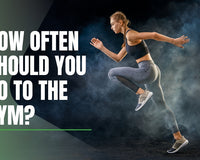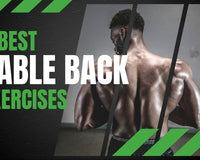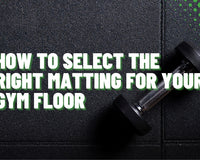When most people talk about back training, it usually revolves around the lats, traps, or maybe even the rear delts. But tucked neatly between your shoulder blades sits a pair of underrated muscles: the rhomboids.
Strong rhomboids help you pull your shoulders back, improve posture, and keep you from looking like you’ve been hunching over a laptop for 14 hours. They also play a major role in stabilizing the scapula, which makes every press, pull, and overhead move more efficient. So yes, your rhomboids deserve their own training montage.
This guide will walk you through the best rhomboid exercises, why they matter, and how to train those muscles efficiently.
Why the Rhomboids Are Important

The rhomboid major and minor sit beneath the traps, connecting your spine to your scapula. Their job is to pull your shoulder blades together and down, like when you squeeze your back at the top of a row. They also help stabilize your shoulders during pressing and overhead movements.
When your rhomboids are weak or overpowered by your chest muscles, your shoulders round forward, your neck tightens, and your posture suffers”
Over time, this can lead to back pain, shoulder injuries, and difficulty generating force in compound lifts. Strong rhomboids mean stronger lifts, fewer injuries, and a more confident stance.
Related Post: Vertical Pull Exercises For a Strong Upper Body
How to Train the Rhomboids
The rhomboids respond well to pulling motions that involve scapular retraction, meaning you’re squeezing your shoulder blades together.
Rows, flys, and banded work all fit the bill. Unlike the lats, which prefer heavy pulling, the rhomboids thrive with moderate weight and higher reps since they’re smaller stabilizer muscles. Aim for 10 to 15 reps per set with a focus on quality contractions.
The Best Rhomboid Exercises
Now that you know why they matter, let’s go through a list of rhomboid exercises that will give your back the definition and strength it deserves.
Mix and match these into your current program for noticeable improvements in posture, pulling strength, and overall back aesthetics.
1. Prone Lateral Raise

This one may look easy, but it burns like a thousand tiny campfires in your upper back.
How to Do It
Lie face down on a bench or mat with a light dumbbell in each hand. With arms extended at your sides and palms facing inward, lift your arms out until they’re level with your shoulders. Squeeze your shoulder blades together at the top, hold for a second, then lower slowly.
Why It Works
It isolates the rhomboids without letting your bigger back muscles take over. Keep it light - the goal is activation, not ego.
2. Front Raise

How to Do It
Lie face down again, arms extended overhead with thumbs pointing to the ceiling. Raise your arms straight up, squeeze between your shoulder blades, then lower with control. For more intensity, grab a pair of small dumbbells.
Why It Works
The thumbs-up grip puts your shoulders in a safe position and targets those hard-to-hit upper back fibers. It’s simple, effective, and you’ll definitely feel it the next day.
3. Scapular Retraction

Time to learn how to pull without actually pulling.
How to Do It
Set yourself under a bar in a Smith machine or assisted pull-up station. Grab the bar, keep your body rigid, and instead of pulling with your arms, focus only on moving your shoulder blades down and back. You’ll lift yourself a few inches with nothing but scapular movement.
Why It Works
It teaches you to isolate scapular control, which is essential for activating rhomboids during bigger lifts like rows and pull-ups.
4. Rear Delt Fly

Rear delt flys hit both the rear delts and rhomboids, making them a two-for-one deal your back will thank you for.
How to Do It
Sit on a bench, lean forward, and let dumbbells hang beneath you. With a slight bend in your elbows, raise the weights out to the side until you form a “T” shape. Hold, then slowly lower.
Why It Works
It recruits both rear delts and rhomboids, which helps improve posture and balances out pressing-heavy routines. If you bench a lot, this move is your new best friend.
5. Scapular Wall Slides

This one looks easy - until you try it.
How to Do It
Stand against a wall with your head, back, and butt pressed firmly into it. Start with arms extended overhead, elbows locked out, and slowly slide your arms down into a goalpost position while keeping everything against the wall. Return to the start and repeat.
Why It Works
It forces your rhomboids to fire while also improving shoulder mobility. It’s part strength exercise, part posture correction, and all humbling.
6. Inverted Rows

Now let’s add some meat and potatoes.
How to Do It
Set a barbell in a rack at hip height. Lie underneath, grab the bar with an overhand grip, and pull your chest up while squeezing your shoulder blades. Lower under control and repeat.
Why It Works
It’s a bodyweight staple that smokes your rhomboids and builds pulling strength without needing heavy equipment. Plus, adjusting the bar height makes it as easy or brutal as you want.
7. Band Pull-Aparts

Simple, portable, and guaranteed to make your upper back feel like it’s on fire in the best way.
How to Do It
Grab a resistance band with both hands, arms extended in front of you. Pull the band apart until it touches your chest, squeeze, then return with control.
Why It Works
It’s perfect for warming up, finishing off a back session, or sneaking in posture work at the office. Cheap and effective - a rare combo in the gym.
Tips for Efficiently Targeting Rhomboids
Now that you’ve got a solid exercise menu, here are some tips to make sure the rhomboids are actually clocking in for work.
-
Use an Overhand Grip: This shifts tension toward the upper back instead of the lats.
-
Shoulder Blades, Not Arms: Focus on squeezing your back rather than just moving weight.
-
Control the Tempo: Slow reps with a pause at peak contraction beat sloppy momentum every time.
-
Stick to Moderate Weight: Go heavy on deadlifts, not here. The rhomboids prefer precision over brute force.
Related Post: 5 Dumbbell Trap Exercises
Sets, Reps, and Programming
Since rhomboids are smaller muscles, they do best with moderate loads and higher reps. Aim for three to four sets of 10 to 15 reps, up to twice per week.
You can add them on back day, push-pull splits, or even as accessory work after big lifts. Consistency is key, and your posture will thank you for the effort.
Why Strong Rhomboids Matter

Yes, strong rhomboids look good. A well-defined upper back gives that “V” shape a finishing touch. But the benefits are much deeper than that. Strong rhomboids mean:
-
Better posture
-
Reduced neck and shoulder pain
-
Improved bench press and squat mechanics
-
Greater scapular stability (goodbye, shoulder impingements)
-
Increased pulling strength in rows, pull-ups, and deadlifts
They’re like the unsung heroes keeping your entire upper body in harmony.
Related Post: Our Top 7 Horizontal Pull Exercises
Final Thoughts on Rhomboid Exercises
Rhomboids may not get as much attention as the lats or traps, but training them consistently pays huge dividends in strength, posture, and aesthetics.
By incorporating exercises like prone raises, inverted rows, band pull-aparts, and barbell rows, you’ll build a back that not only looks strong but actually functions better too.
So, the next time you’re writing your workout plan, don’t let the rhomboids get left out. They may be small, but they are essential for athletic performance and posture. Besides, who doesn’t want to stand taller, lift stronger, and maybe even flex a little harder in the mirror?





